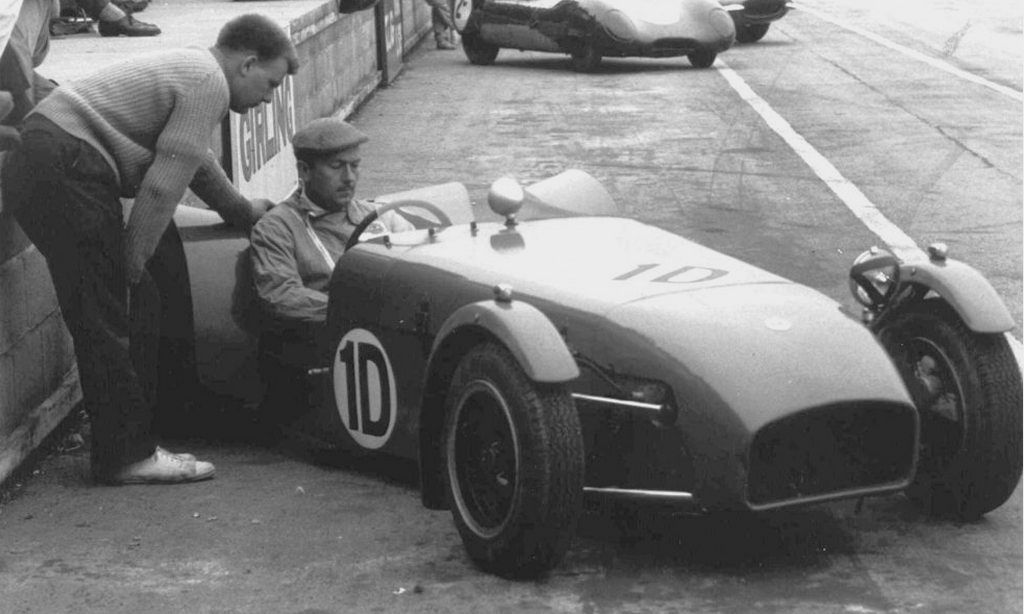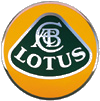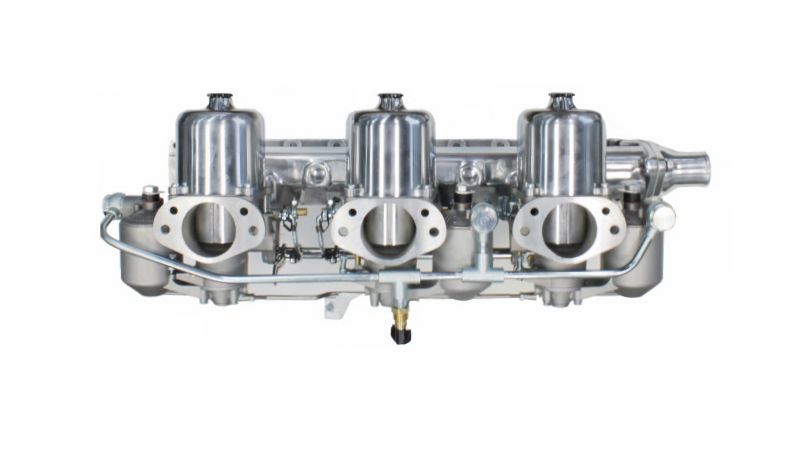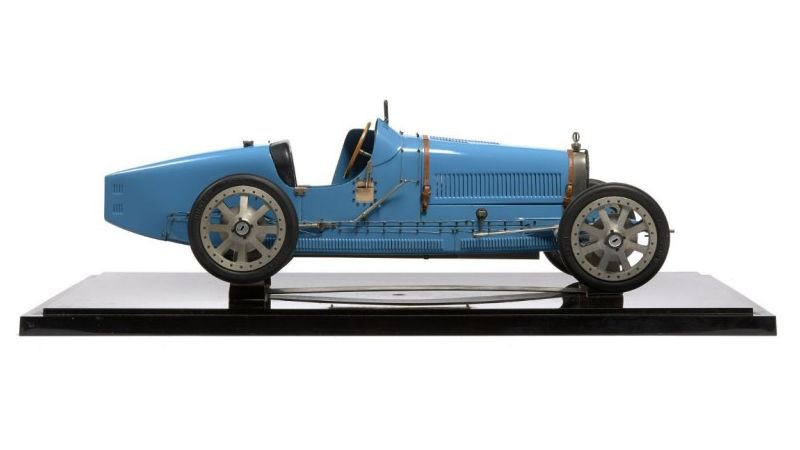Lotus Motor Cars
Simplify, then add lightness
When the name Lotus is mentioned the man, Colin Chapman comes immediately into mind. The founder of Lotus, Anthony Colin Bruce Chapman, was born of ordinary, parents in the London area of England on May 19, 1928.
His youth was filled with typical English boyhood antics and schooling. By the age of 17 he was entering the University College of London University to study engineering. And, as any story about motorcars would begin, Colin was already travelling about on his Panther 350cc motorcycle.
Unfortunately the Panther was short lived and by the University's welcoming dance the Panther was written off, having been smashed into the door of a taxi. His interest for motorcars had yet to be piqued but, with the arrival of Christmas Colin was presented with a maroon '37 Morris 8 Tourer.
The Morris was lavished with Colin's attention and was used for transporting himself to and from is home and the University. Often he would have fellow students Colin Dare and Hazel Williams, who Colin had met at a dance in 1945, as passengers in his journeys.
These journeys were not without peril and adventure. But Colin had turned them into sport, always interested in setting new records for traveling the distance between home and Hazel's, Colin Dare's and school in the shortest amount of time.
It was soon after entering the London University, that he and Colin Dare began a second hand car sales business. The year being 1946 cars were scarce and the business boomed, growing to one to two cars being bought and sold per week.
Often lectures were skipped in order that deals could be secured. As the inventory of cars grew the space to keep the cars became insufficient and the two Colins were seen stashing cars in the lock up shed behind Hazel's home.
The normal buying and selling became easy and the two Colins grew into modifying and improving their cars before placing them on the block. This brought greater profits, but more work.
This booming business was not to last as in 1947 the British government did away with the basic petro rationing and new cars became plentiful and the demand for second hand vehicles crashed. The business was disbanded and what remained was an old clapped out 1937 Austin 7.
This old Austin was to be the basis of the first Lotus, the Mark 1. Only the chassis and drivetrain were retained as Colin fashioned a totally new body and modified the engine and suspension.
The Austin was modified to be a trials car, a very English auto competition of driving cars through all sorts of terrain against time. Many of the construction techniques were those that Colin had learned while studying aircraft construction at school.
Two trials were entered in the spring of 1948 and the Mark 1 Lotus scored its first two class wins. Colin continued to develop and modify the Mark 1. First larger wheels and tires were fitted and the front beam axle was split and hinged in the center to provide independent front suspension.
However with the coming of late spring work on the Mark 1 tapered off to benefit of Colin's studies. By the end of the year 1947 Colin Chapman had completed his engineering studies and officially attained B.Sc.
By now Colin was quite familiar with the short comings of the Mark 1 and the construction of a Mark 2 appealed to him to eliminate those inadequacies. Work had only begun on the new car when Colin enrolled in military service in the RAF, where he learned to fly.
He became even more intrigued by airplanes, specifically, in their flight and engineering. It was to be an mportant experience for this budding engineer. During his leaves Colin would return to the lock-up garage behind Hazel's home to work on the Mark 2.
At times Hazel began to resent the attention the new car was getting. Colin had little time for dates, instead, before rushing back to camp, he would present her with a job list that had to be completed before Colin's next leave.
The Mark 2 was completed by late 1948. The speed and performance of the Mark 2 further enthused Colin's interest in motorsport, however this was not until a 1172cc Ford 10 engine had replaced the worn Ford 8 engine.
In September of 1949 Colin's term with the RAF was completed and a future in the RAF had no appeal to him, so it was he returned to civilian life. By December Colin was employed in a London firm of constructional engineers.
A life of bridge building seemed to lie ahead for Chapman, something he secretly did not relish. By Christmas the Mark 2 had grown a shapely radiator cowl and an ingenious system for the headlamps. They were mounted in the cowl and made to turn with the steering.
The spring of 1950 proved how competitive the Mark 2 was with class wins in trial after trial. The Mark 2 was sold to Mike Lawson, the uncle of Sterling Moss, and Mike continued to win in the next year.
In the fall a new formula was introduced for closed circuit racing, 750cc Formula racing. Thus by January of 1951 work on the Lotus Mark 3, a car designed to meet the requirements of this new formula, had begun. It was this third Lotus that really caught the eyes of the racing community.
With Colin in the driver's seat, the Lotus Mark 3 consistently won races it was clearly the fastest of the 750cc Formula. The Mark 3 showed all of the now classic signs of the future Lotus. It was light, lean, innovative.
It did not merely win, it pounded the competition into submission. It forced the racing governing bodies to regulate specifically against the Mark 3 to preserve equality. This was, as was to be seen in the future, only the first of such occasions where rules were written with Lotus specifically in mind.
The die was set, the racing community had been put on it's ear. By November of 1951 Mike Lawson returned to Colin ready to purchase a faster Lotus. By the end of 1951 it was apparent that other competitors were interested and inquiries began to flow into Lotus about obtaining copies of this winning car.
Copies of the Mark 3 were built and the Mark 4 was put into motion. January 1st of 1952 marked the official beginning of the Lotus Engineering Company, now located in Colin's father's building in Hornsey.
The Mark 4 was completed and was sold to Mike Lawson who scored class wins race after race in 1952. By late 1952 Chapman had noted the demand that existed for the sale of components that assembled into a complete car.
The Mark 5 was shelved to design and build components to fill this market. So it was that the Mark 6 was born. Chapman had noted that the twin channel chassis construction of the Austins became heavy when properly reinforced, thus with his engineering knowledge Chapman designed a robust multi-tubular body-frame.
The new structure was light, yet extremely rigid. There was no room for excess, every tube had a job. The resultant space frame for the Mark 6 weighed only 55 pounds, and when panels and mounting brackets were added the full up weight tipped only 90 pounds! The success of the Mark 6 was verified by the list of customers lined up to purchase copies of the winning car.
By late 1953 the Mark 8 was introduced and Colin finally married Hazel. The small firm cars continued to flourish, their cars finishing with numerous victories generating orders for the Chapman creations to pour in at rates far exceeding production.
Finally Colin was no longer able to hold down two jobs, that with British Aluminum and running a full time car construction firm, the budding Lotus company was triumphant- Colin was theirs full time.
The next few years were spent pursuing victories at Le Mans, the cars; the Mark 9, the Lotus Eleven and the Lotus 14, Elite. By 1960 the Le Mans victories were in hand and Chapman's interests in racing turned from Sports Racer vehicles to open wheeled race cars, Formula Junior, Indianapolis Cars and the World Series of racing; Formula One, an arena dominated by the likes of Ferrari, Mercedes, Porsche, Cooper and BRM.
From 1960 to 1981, Chapman and Lotus became the most winning Formula One Team, posting championship after championship. Establishing a tradition of winning by a total commitment to creating a superior performing car through superior engineering and innovation.
It was a dedication to superior engineering and innovation that took Chapman and Lotus to an Indianapolis victory in 1965 and fielding the infamous STP Turbine cars and 4 wheel drive cars of the late 60s. It was this same dedication that created the first successful full monocoque racing chassis, the first successful fully stressed engine for racing, and the first full composite chassis for a road car.
It was the Chapman connection that brought Ford's money to the small firm of Cosworth, operated by two old employees, Frank Costin and Keith Duckworth. From this came the best known Formula One engine in history, the Cosworth Ford DFV.
The first win came with Jim Clark at the 1967 Dutch Grand Prix. It was the maiden race for the sleek, ultra-light Lotus 49 powered by the Cosworth Ford in its first race. The competition was overwhelmed by the superior chassis and engine and victory was Clarks.
In 1978 Chapman unveiled the Lotus 78 Formula One race car and again the rule books would have to be rewritten as would history. The Lotus 78 used bodywork on the underside that effectively created a venturi, thus as the air rushed under the car the air was forced to accelerate and the pressure of the air was lowered dramatically.
The result was downforce never before imaginable, in excess of 2000 pounds of downforce was created in addition to Lotus 78's 1250 pound weight. The Lotus 78 was said to corner as if truly on rails and it took six Grand Prix wins in 1978. The impact upon racing created by ground effects cars were so astounding that by the end of 1981 the ground effects Formula One cars were banned and replaced with flat bottom cars in 1982.
When Chapman died in December of 1982, from a massive heart attack, no one questioned the indelible influence that Chapman and his small English motor car company had upon the engineering and manufacture of automobiles both for racing and for street. Every single automobile on the race track and on the road today owes some part of its design and engineering to Anthony Colin Bruce Chapman and his company, Lotus.
What is missed by racing enthusiasts around the world is the sight of Colin Chapman's black cap sailing cross the track as one of his Formula One race cars streaked across the finish line at one of the 78 Grand Prix races won by Lotus.
What is missed by automobile enthusiasts around the world is the feeling of great anticipation of what the brilliant mind of Colin Chapman would bring to the roadways for them to savor and enjoy. And, yet the Lotus Legend lives within the walls of the Lotus factory in Hethel, England and with the current Formula One Lotus race cars.
It has been said by many that Colin Chapman accomplished more to influence the modern automobile than any other human. Quite a statement considering the greats who are Chapman's peers. It is enough to say that the automotive engineering and automobiles are in their present state of development due to Colin Chapman: innovator, genius, engineer, driver, founder & enthusiast.
We are looking for the following cars. If you do have any of the below listed vehicles - and you are ready to sell - please Contact Us.
| Race Cars |
|---|
| Mark VI |
| Mark IX |
| Eleven |
| Road Cars |
| Eclat |
| Elan |
| Elite |
| Esprit |
| Europa |
| Excel |
| Seven |
We buy, sell, broker, locate, consign and appraise exceptional classic, sports and collector Lotuss'
Contact us when you are serious about buying a fine Lotus Motor Car or to arrange a free and confidential valuation with a view to selling.













